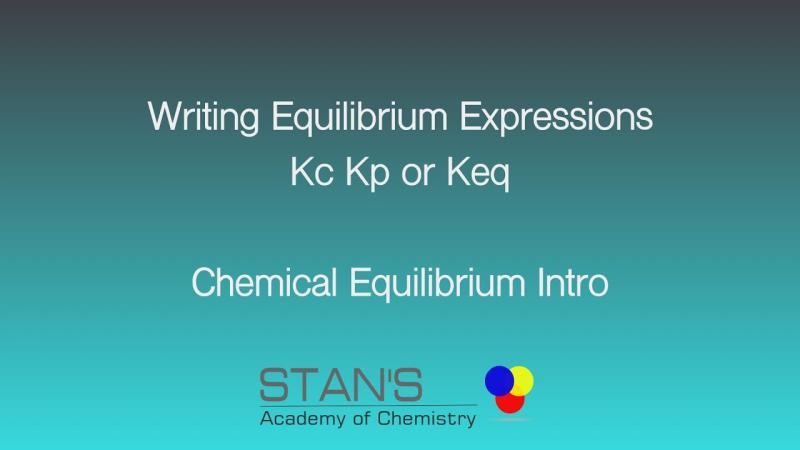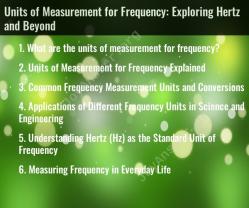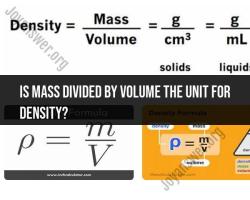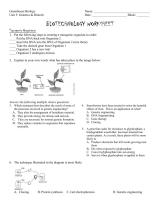How to write KP expression?
To write an equilibrium constant expression, often denoted as Kp (K for pressure), for a chemical reaction, you can follow these steps:
Balance the Chemical Equation:
- Start by writing the balanced chemical equation for the reaction. Ensure that the equation is balanced with the correct coefficients for each reactant and product. If the equation is not balanced, you cannot accurately write the Kp expression.
Identify Gaseous Reactants and Products:
- Kp expressions are typically used for reactions involving gases. Identify the gaseous reactants and products in your balanced equation. These are the species that will be included in the Kp expression.
Write the Kp Expression:
The Kp expression is written as the product of the partial pressures of the gaseous products raised to the power of their coefficients divided by the product of the partial pressures of the gaseous reactants raised to the power of their coefficients.
The expression follows the general form:
Kp = (P_product1^coefficient1 * P_product2^coefficient2 * ...) / (P_reactant1^coefficient1 * P_reactant2^coefficient2 * ...)
In this expression:
- "Kp" is the equilibrium constant for the reaction.
- "P_product1," "P_product2," etc., are the partial pressures of the gaseous products.
- "P_reactant1," "P_reactant2," etc., are the partial pressures of the gaseous reactants.
- "coefficient1," "coefficient2," etc., are the coefficients of the products and reactants in the balanced equation.
Include Units:
- Be sure to include the appropriate units for pressure in your Kp expression. Common units for pressure include atmospheres (atm) or kilopascals (kPa), depending on your specific system.
Example:
Consider the following balanced chemical equation:
N2(g) + 3H2(g) ⇌ 2NH3(g)
To write the Kp expression for this reaction:
Kp = (P_NH3^2) / (P_N2 * P_H2^3)
Here, we have raised the partial pressures of NH3 to the power of 2 (the coefficient of NH3 in the balanced equation) and the partial pressures of N2 and H2 to the powers of 1 and 3, respectively, based on their coefficients.
The Kp expression helps quantitatively describe the position of equilibrium for a gaseous reaction. By comparing the actual partial pressures of reactants and products to the Kp value, you can determine whether the reaction favors the forward or reverse direction at a given set of conditions.
Writing KP Expressions: Steps and Guidelines
Writing equilibrium constant expressions (KP) is an essential skill in chemistry for understanding and predicting the behavior of chemical systems at equilibrium. KP expressions represent the relationship between the partial pressures of gaseous reactants and products at equilibrium.
Steps for Writing KP Expressions
Identify the balanced chemical equation: Write the balanced chemical equation for the reaction of interest.
Identify gaseous species: Determine the gaseous reactants and products involved in the reaction.
Write partial pressures: Represent the partial pressures of the gaseous reactants and products using their chemical formulas and lower-case p's.
Apply stoichiometric coefficients: Raise each partial pressure term to its corresponding stoichiometric coefficient from the balanced equation.
Separate reactants and products: Separate the partial pressure terms for reactants and products using an equals sign (=).
Guidelines for Writing KP Expressions
Include only gaseous species: Only gaseous species are included in KP expressions. Liquid, solid, and dissolved species are not included.
Use partial pressures: Partial pressures are used instead of concentrations for gaseous species.
Use correct stoichiometry: The stoichiometric coefficients from the balanced equation must be applied correctly.
Simplify the expression: If possible, simplify the expression by combining common factors and canceling out terms that appear on both sides of the equals sign.
Mastering the Art of KP Expression Formulation
Writing KP expressions requires a thorough understanding of chemical equilibrium concepts, the ability to identify gaseous species, and the correct application of stoichiometric coefficients. With practice and familiarity with chemical reactions, one can become proficient in formulating KP expressions for various equilibrium systems.
Creating KP Expressions for Chemical Equilibrium
KP expressions are crucial for predicting the equilibrium behavior of chemical systems involving gases. By knowing the KP expression, one can calculate the equilibrium partial pressures of the gases and determine the extent of the reaction at equilibrium. KP expressions also provide insights into the effect of temperature and pressure on the equilibrium position.












